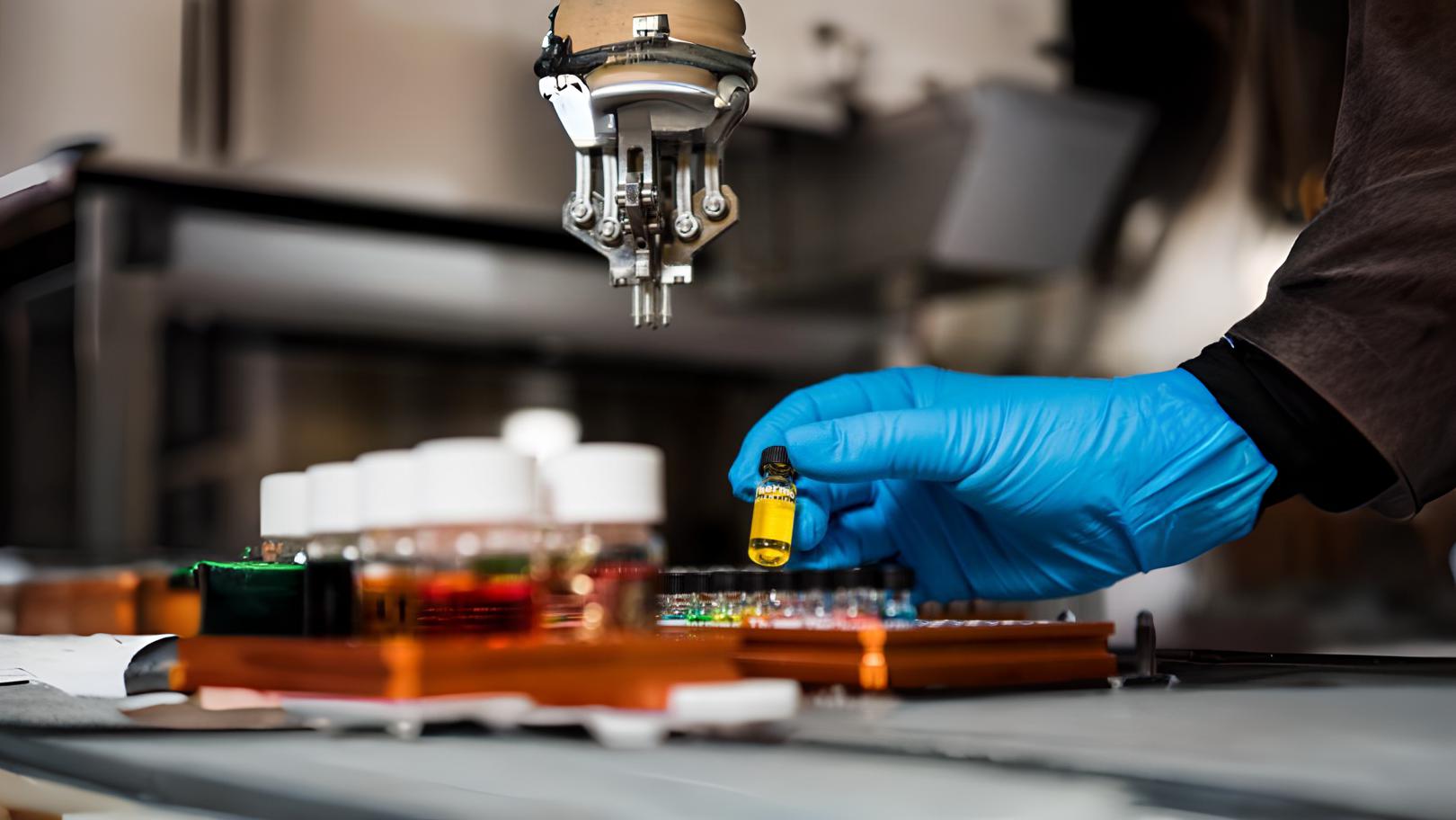How Predictive Modelling Can Change Personalised Medicine
 3 years ago
By Charlotte Di Salvo
3 years ago
By Charlotte Di Salvo

Personalised medicine – treatments which focus on the individual patient or sub-population, not simply prescribing a generic treatment to a large swathe of patients – has been a key target in healthcare for a long time now. New technologies, including machine learning (ML), have the potential to greatly improve how patients are treated individually by better analysing their data and reducing industry costs.
What is personalised medicine?
Personalised or precision medicine is an approach which classifies patients based on a number of individual patient characteristics, such as biomarkers, from their disease subtype, to risk, to response to treatment.
The importance of personalised and precision medicine lies in the fact that expenditure in healthcare can be greatly reduced by implementing it, alongside huge benefits to the patients who have their disease treated as it specifically relates to them and their population sub-type; they do not have the faults inherent in a drug or product that caters for a broad, ultimately highly variable population.
While personalised medicine is currently largely evaluated using the genetic data and biological markers of the patient, as well as some work around personal preference and needs, more must be done to predict individual outcomes of certain treatments and resulting adverse effects they might have. This can be done with predictive modelling.
Predictive modelling takes historical data and uses AI/ML and statistics to determine possible outcomes from it. This can mean analysing an individual’s health conditions, age and ancestral medical history to determine their risk of developing certain diseases. Naturally, this is an extremely complex process, with a number of variables to be quantified between data and outcome. Humans alone could not create these models. With increasing sophistication and speed, however, algorithms are able to do so.
Healthcare data can come from a number of sources. It can be personal patient data, health records such as hospital electronic health records (EHRs), or imaging data that can be scanned by software to determine best course of action for the patient.
From these models, true personalised medicine can be achieved. With a better understanding of how likely it is for patients to develop a diagnosis or recover from a disease, pharma and healthcare companies can determine the best possible treatment to suit their condition and fit their needs.
Benefits of predictive models in personalised medicine
The University of Pennsylvania was one of the first research organisations to develop a predictive ML model for healthcare in 2017, using EHR data to identify those patients most likely to contract septic shock 12 hours in advance of their doing so. Other such ML models have followed, such as the FDA’s tool using genetic information and past studies to predict patient response to therapies.
Training ML algorithms on various healthcare data sources can ensure an incredibly fast, largely accurate prediction of how a patient will respond to treatment given their past history, similar population reactions, and other biological and environmental factors. This in turn can greatly reduce risk to patients, who otherwise might end up taking drugs that would cause major adverse effects or not work at all – or perhaps even the wrong drugs, which could make their conditions worse.
Across the pharma and healthcare industries, these models have the potential to vastly enhance patient care while reducing the cost of failed or inefficient treatments. According to one study, 60% of healthcare executives believed predictive analytics would save their businesses 15% or more over five years; in another, 92% of payers and providers believed predictive analytics would be ‘essential’ to their businesses’ futures.
There is also the potential for gamification of healthcare, an area that has shown great promise in other industries. With knowledge of potential illnesses and susceptibilities, patients can in theory use this information to guide their lifestyle to avoid the greatest threats, thus ultimately staying more healthy and causing less expense to the healthcare sector.
Challenges to building predictive models
The first and most evident challenge when attempting to build a predictive model in the pharma space is access to data. This can be extremely difficult depending on the source, as many companies’ data is heavily siloed with different departments or simply hidden from public view. Naturally, many organisations also restrict data access due to concerns such as patient privacy or restrictive regulations.
One solution to this problem of siloing is federated learning. This form of ML training is wholly decentralised, meaning that rather than data being brought to the central ML server and fed in, the ML algorithm has local copies installed on every device or server hosting the data it needs, whether patient wearables or EHRs. Then, rather than the data travelling to the central ML server to be analysed, the local copies of the algorithm train themselves on the data and transfer back training results to the central ML algorithm – meaning that no data is jeopardised or risked.
Another inherent challenge when working with AI and machine learning is the need to train algorithms correctly to interpret the data they are given. Naturally, this is a complicated process that varies per algorithm, but according to the Center for Applied AI four steps can be taken to ensure success:
• Understanding the goal of the algorithm being built and focusing on it
•Being specific in the target you are aiming at
• Preparing to either update or terminate the algorithm if it fails to live up to the goals set for it
• Conduct regular audits on the algorithm to determine value
A final challenge involving the creation of predictive models regards inclusivity and representation. As so much of pharmaceutical data is skewed in favour of some patient populations and races at the expense of others, it can be hard to gather enough broad data to ensure there is no bias when it is fed into the algorithm.
It is certainly true that predictive models are not yet at the stage where they can be employed on a large scale, and not to a reliable enough extent to warrant their cost. To truly see this technology develop, greater computational efficiency and better access to large-scale datasets will be needed – not to mention a reduction in business data silos, and greater collaboration within the pharma and healthcare industries.
But it is clear that predictive models have the potential to enormously benefit the sector. With the ability to predict how patients’ diseases will develop or even prevent them indefinitely, healthcare cannot afford to let this technology pass by.
Joshua Neil, Editor
PharmaFeatures

The Potential of Therapeutic Psychedelics Drugs: An Interview with Professor Albert Garcia-Romeu
Mental health conditions like addiction and diseases like Alzheimer’s represent a great unmet clinical need. Psychedelic research at preclinical stages have shown potential for positive neurological changes in the brain for models of depression, addiction and Alzheimer's. In a recent...
3 years agoThe Potential of Therapeutic Psychedelics Drugs: An Interview with Professor Albert Garcia-Romeu
Mental health conditions like addiction and diseases like Alzheimer’s represent a great unmet clinical need. Psychedelic research at preclinical stages have shown potential for positive neurological changes in the brain for models of depression, addiction and Alzheimer's. In a recent...
3 years ago
Protein-Based Diagnostic Biomarkers for Cancer: Where Are We Now?
While significant progression has been made in cancer therapeutics, the disease remains a serious health risk. The lack of commercially available diagnostic biomarkers hinders accurate early cancer diagnosis which could otherwise save many lives. Protein-based biomarkers have demonstrated the potential...
3 years agoProtein-Based Diagnostic Biomarkers for Cancer: Where Are We Now?
While significant progression has been made in cancer therapeutics, the disease remains a serious health risk. The lack of commercially available diagnostic biomarkers hinders accurate early cancer diagnosis which could otherwise save many lives. Protein-based biomarkers have demonstrated the potential...
3 years ago
Supporting Diversity in Clinical Trials: An Interview with Ash Rishi, COUCH Health
COVID-19 has changed how many sponsors enrol and retain trial participants. From decentralisation, increased use of wearables and changes in population targeting, the pandemic has seen a shift in both priorities and procedures with regard to enrolment. But is this...
3 years agoSupporting Diversity in Clinical Trials: An Interview with Ash Rishi, COUCH Health
COVID-19 has changed how many sponsors enrol and retain trial participants. From decentralisation, increased use of wearables and changes in population targeting, the pandemic has seen a shift in both priorities and procedures with regard to enrolment. But is this...
3 years ago